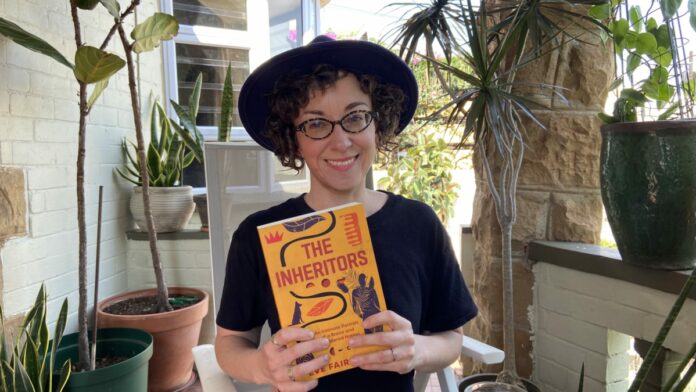In The Inheritors: An Intimate Portrait of a Brave and Bewildered Nation, writer Eve Fairbanks writes a compelling non-fiction story that comes off as fiction at first glance. If you quickly page through The Inheritors (which isn’t recommended – rather read the entire book), you would be forgiven for thinking the book is a fictionalised version of events. But that is not the case at all. In the book, Fairbanks tells the story of South Africans facing a “reckoning”.
The Daily Vox sat down with Fairbanks at her home to discuss the book, its inspiration and how she reckoned with her own positionality.
Fairbanks was raised in Virginia in the United States. In 2009, she came to South Africa on a two-year writing grant and now lives in Johannesburg. The grant was from a small organisation that gave writers the opportunity to go to a country they were interested in for two years. For the first year of the grant, the writers weren’t supposed to write at all and just needed to immerse themselves in the country.
So when Fairbanks arrived in Cape Town, she bought a small car and spent a lot of time just driving around. “There wasn’t a pressure to write,” Fairbanks said. However, there were many questions and ideas she had. Some of those were influenced by the perceptions from people in the United States of America that the “South African story had stalled after 1994 and Mandela”.
So Fairbanks wanted to write a group of stories about people who were not the popular political and cultural figures but instead just South Africans were grappling with the state of their lives in post-apartheid South Africa.
“The great thing was I was able to do a lot of interviews without immediately converting it into a sausage and making it into a product,” said Fairbanks. Even though she initially landed in Cape Town, she travelled to other parts of the country including Limpopo where she spent six months writing about land reform. From that experience, she came to a sort of realisation that a lot of the people, especially the emerging black farmers she spoke to, were anchoring themselves to kinds of untold realities.
She then turned to addressing these ideas towards South African and American audiences. Whether people agree or disagree with Fairbanks (which can be surmised after reading the book), she makes several inferences between South Africa and the United States. “The US and South Africa both feel like countries that are steeped and inundated by history and they think so much about it and they know the history. Yet because there’s these storylines, there is also a lot that’s forgotten or misunderstood.”
Fairbanks said she was surprised to find the direct connection between the apartheid government and the racist laws that existed in the United States. But beyond that there, she felt that South Africa and America are thought of as exceptional and standing for more than what they are. This can hurt and affect the way people see themselves.
The book focuses on several characters/people with three main people making up the story. There is political activist Dipuo, her “born-free” daughter, Malaika and Christo, an Afrikaner man who was drafted into the apartheid regime army. It took a considerable amount of time to find these three central characters. Fairbanks interviewed many people from high-profile politicians to political figureheads to farmers and everyone in between. She even wrote an initial draft which focused on Julius Malema, an African National Congress member and someone from Afriforum. It was ready to be published but she decided to not go ahead with it.
Fairbanks said she remembered thinking that there was no real life and story in that because those people were all being used as examples of something. She then went back and sat down to think about all the people she had met from her time in Cape Town, Johannesburg and Bloemfontein. From there she embarked on the in-depth interviews and fact-checking with the people who are in the book.
The book features the three main characters and people as they recount their lives, where they came from, where they are and where they hope to go. Throughout their narratives, Fairbanks has positioned herself in the story, sharing her experiences and thoughts as she meets them, travels with them and talks to them. Even though that isn’t a usual writing style, Fairbanks felt it was necessary to do that. It came about because she did realise her positionality as a white, American woman.
She found that there was a frankness in the responses she received perhaps because the interviewees thought she was leaving and going back to America.
Another benefit of being an “outsider” was that Fairbanks could see things that perhaps South Africans sometimes missed being caught up in their lives and difficulties.
“It sometimes feels like this country is in a bubble – but like the stereotypical bubble boy. Like it’s in an isolation chamber and it’s trying to diagnose itself without looking at anyone else in the ward.”
Through the book, there is an attempt and hope to show these different sides of South Africa to South Africans and the world.
The Inheritors is published by Jonathan Ball Publishers in South Africa and is available online and at all good bookstores.









